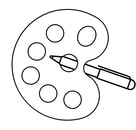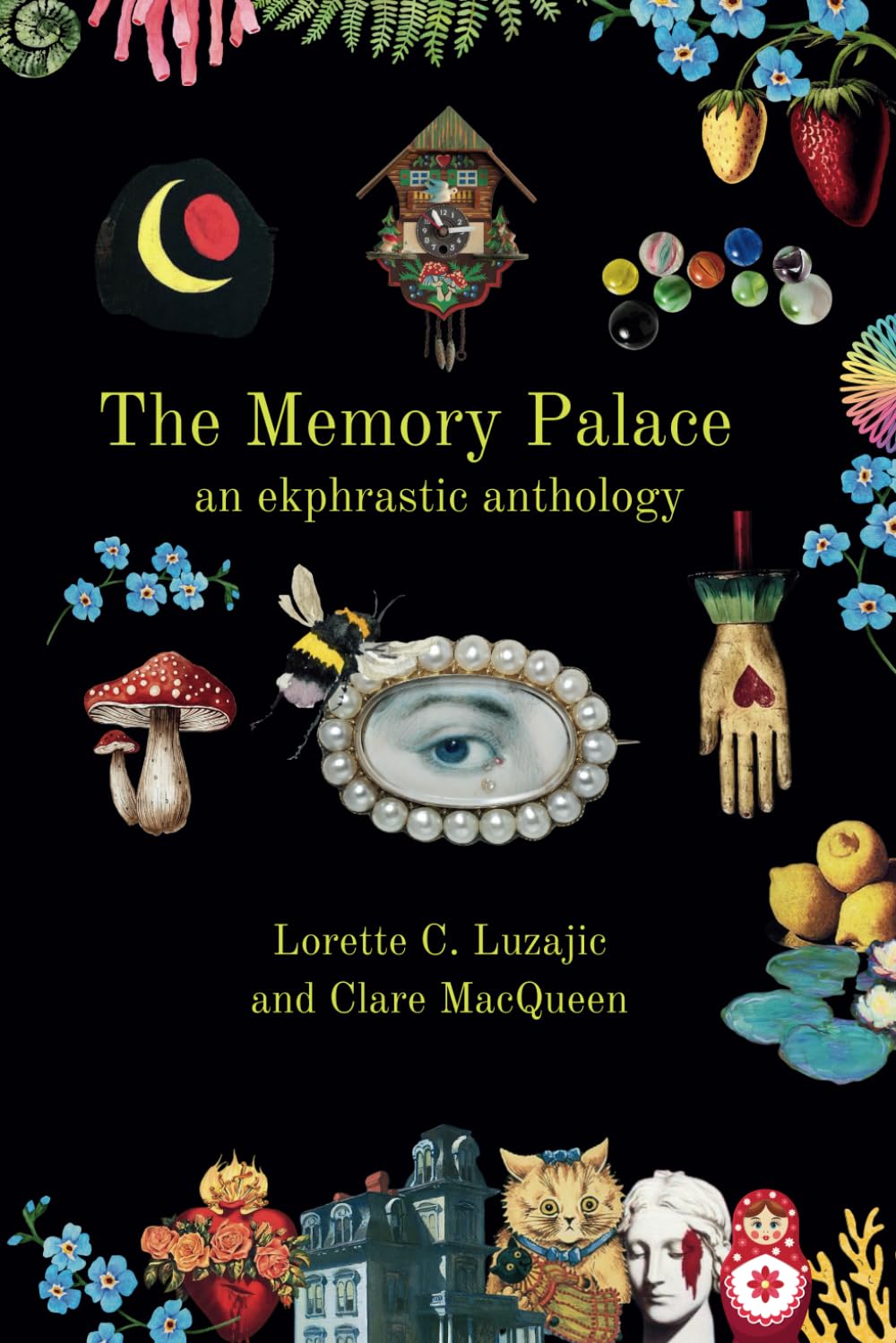|
They're Still Stealing Van Goghs
While researching Nazi art thefts for a novel, L.A. Hardscape, I was brought up short by the audacity and sheer scope of the crime. I had seen Monuments Men, but that had seemed like an entertainment, an embellished tale based on fact, and it didn't really dilate my cortex like the tons of print that you can dig up on the thefts and I just scratched the surface. Hermann Goering's "collection" alone, amounted to almost 2,000 works of art when you count sculpture and tapestries along with the 1,400 paintings. And, like a true obsessive bureaucrat, he and his minions catalogued every single one. Including who they stole it from. These guys were nothing if not methodical. And it should be mentioned here that the entire amount of stolen art and artifacts is much greater than what adorned the walls of Carinhall, Goering's chalet. The Third Reich 's amassment of looted objects was in the hundreds of thousands and storage in salt mines, caves, warehouses and tunnels from 1933 to the end of the war are legend. A lifetime could be spent researching the thefts. Goering's collection alone has taken researchers years to trace. Efforts are ongoing. I found myself looking up painting after painting and, being an artist myself, sighing over each and every one. This guy surrounded himself with beauty and splendor, the best of the best--I don't know what the metaphor is here; this truly evil ratbastard of sewer/vomit heart and mind making his grand chateau outside Berlin, Carinhall, the depository of the world's art genius. There is no metaphor so I won't struggle for one. Hitler's number two man was one hell of a collector, emphasis on hell. I was wasting a lot of time looking at great paintings (Can that be time wasted? If you're trying to get a novel done, I suppose it could be.) many of which I'd glimpsed in art history courses in art school. My eyes were glazing over. Just one of these paintings could set me up in fast cars and tall cotton for the rest of my life. At this point I was eyeing Van Gogh’s Bridge at Langlois in Arles. And that's when I made the decision to follow the Nazi trail of theft through one artist, thus paring down the time spent and making the task less gargantuan. I looked up this painting and found that the bridge at Arles was the subject of four Van Gogh oil paintings, some watercolours and a series of drawings. All of these are just superb, as you would think. He was about thirty-five when he produced them in 1888 in Arles, France, where he lived at the time and where he enjoyed the height of his career and productivity. In less than fifteen months he produced more than 200 paintings. The bridge reminded him of his homeland, the Netherlands, and he sent a framed version of it to an art dealer there. One of the 1888 versions was taken by Goering and it was one of his favorites. He stole Van Gogh's Portrait of Doctor Gachet as well, but ended up selling it in 1937. But not the bridge. That stayed at Carinhall. But where is it now? I lost the trail at Carinhall, though a book might provide some clues. A 518 page book, "Beyond the Dreams of Avarice: The Hermann Goering Collection," published in 2009, could possibly shed some light on which bridge painting was in that collection, and also provide a trail of provenance, which in many cases is labyrinthine. The only information I could find on Van Gogh's Portrait of Doctor Gachet was that it had reportedly been sold. To whom, was not divulged. But another, third, Portrait of Doctor Gachet, of which only two were known, showed up in Greece in the inheritance of a struggling author, Doreta Peppas. It had been "liberated" by her late father in a Resistance attack on a Nazi train. They'd been after ammunition, but Peppas' father also made off with a crate of paintings. One of the paintings was the Van Gogh and other items included a notebook of his drawings. Nazi stamps on the backs of the items were validated as official, and the items themselves appear to be indisputably authentic. Why isn't Doreta rich? No one will touch the art, possibly because it may cast doubt on the authenticity of other Van Gogh paintings now hanging in galleries and private collections. It's a byzantine story but suffice to say she may be the richest poor struggling author in the history of literature, and by way of the Nazis, the art world. She remains penniless, and the art is in a temperature controlled vault which further drains her meagre income. The art trove is hers, having been traced as far back as possible, and no one has come forward to claim the pieces. Not the family from which they were stolen, or anyone else. It's quite possible the previous owners were the last of a family line and met their end at the hands of the Nazis. The crateful never reached its intended destination, where it would no doubt have been catalogued. The notebook alone is probably worth $3.5 million and a respected authority said he believes it to be Van Gogh's student workbook from the Royal Academy of Art in Brussels. The age and the paper have been confirmed in separate tests. Other tests and samplings have further corroborated the pieces as genuine. The Van Gogh Museum offered to authenticate the Gachet painting but a contract they sent stated they would keep it forever. For free. Meanwhile Ms. Peppas has lost her home due to search, storage and authentication costs. The Nazis, it appears, have left their mark, and curse, on Van Gogh and the world's fine art market once again. The total estimated worth of her crate of stolen Nazi art, which includes a Cezanne nude, is over $100 million. Conspiracy theorists are blaming a bullying art cartel for refusing to legitimize the find until they can get their hands on it some other way. I don't know who is to blame in such a bizarre situation, but it does irk me that the art isn't shared with the world. Isn't that the point of great art? It's almost a sure thing that the art is real--none of the tests would seem to indicate otherwise. Begs the question WTF? Anyway, the trail ran cold on Nazi looted Van Goghs. But mysteries abound and who doesn't love those? Especially mystery writers. (literature seems to be intertwined in this stolen art business) Bestseller Lynne Kennedy (The Triangle Murders, Time Exposure, Pure Lies) came upon just such a mystery while researching Deadly Provenance, a novel of deception involving a Nazi looted Van Gogh oil titled Still Life: Vase with Oleanders. Who better to pursue it? The Brooklyn-born author worked with the San Diego Sheriff's Department and SDPD Crime Lab in forming forensic studies for teachers and students. In adding authenticity to her books she worked with museum and historical experts as well as crime-solving officials at a time when the CSI tv shows were becoming popular. Great credentials for investigating a lost Van Gogh. While she solved the case in her novel, the painting remains missing in real life, and Kennedy herself is still on the case. If anyone has any leads they are encouraged to contact her; a good start is her website, lynnekennedymysteries.com There, you'll find fascinating links to interviews and progress notes. The painting, also known as Vase on Yellow Background, was one of thirty or so that had been at the Bernheim-Jeune gallery in Paris. Suspecting an imminent Nazi raid in 1940 the owners packed them off to Chateau de Rastignac near Bordeaux. In 1941 the Nazis tracked them there, looted as much as they could, and burned the chateau to the ground. The paintings, including the Van Gogh, have not been seen since. And Lynne Kennedy has unearthed some very interesting information in her search, having contacted people and museums who are close to the source. Nazis weren't the only thieves interested in Van Gogh paintings. Two of his paintings were stolen in 2002 from the Van Gogh Museum in Amsterdam, a seascape and a painting of a church in Neunen where his father had been pastor. The burglars climbed to the roof using a ladder, broke through a window and exited out the side of the building using a rope. The theft seems like the stuff of movies. During an investigation of the Camorra Mafia family in Italy, the oils were recovered in 2016. At the time of the crime, the paintings were worth about $4.5 million. Works by Van Gogh have sold for up to $82.5 million at auction, but the stolen works were from his Hague period, and of a style that sell for a good deal less. Another vase-and-flowers Van Gogh oil Poppy Flowers, was stolen in 2010 from Mohammed Mahmoud Khalil Museum in Cairo. Its value is around $50 million and one can imagine a white-suited, red-fezzed Sydney Greenstreet bargaining with Humphrey Bogart for its return. Egyptian officials believed they had caught the perps of the painting pilferage, arresting two Italian suspects attempting to board a plane at Cairo International Airport. No deal. It's still among the missing Van Goghs. It had been stolen previously in 1977 from the same museum and recovered ten years later in Kuwait. If you see a small painting of a bunch of yellow flowers and a couple of red ones in a vase, give the museum a call. If you have a Van Gogh or two, you might want to beef up your ADT alarm system with some of those impenetrable lazer-ined security mazes that only George Clooney could negotiate. Or was that Cary Grant? In one of my books, Ruined Days, a New Orleans art gallery uses holograpic images for its most expensive sculptures. A Degas ballerina revolves under a light, for all intents and purposes a solid bronze figurine, until someone reaches for it and touches only air. As the gallery owner explains to the main character in the story, "Some collectors prefer to have the original in a vault somewhere. We make these up for them so they can appreciate the piece with no reservations about it being damaged or stolen." Perhaps in the future, Van Goghs, Titians, Klimts and Caravaggios will be exquisitely projected images. Once the lights go out in the museum or gallery, so do the paintings. You're still in the presence of genius, once removed. And you're not supposed to touch the works anyway. Sort of like zoos of the future; holographic images, and if your kid jumps into the gorilla cage they won't have to shoot anything. That, to me, is preferable to jailed animals. But hey, that's me. Back to Van Gogh, Nazi loot, and paintings of questionable authenticity that continue to surface. This one, signed Vincent, was purchased for a few hundred guilders in the Dutch city of Breda around the time WWII began. A still life featuring an open bible, clay pipe, and some other items such as a bottle, and a drape of some kind behind, is primarily monochromatic yellow ochres and greens. The owners, Catherine and Malcolm Head from Guildford, believe it to have been painted at the parsonage in Neunen, where Van Gogh lived between 1883 and 1885. They've spent a great deal of money on age testing and other samplings which do corroborate the time, if not the artist. But the Van Gogh Museum dismisses the painting as a fake, citing stylistic differences. They stated that it is more likely the oil was by the lesser-known female Dutch artist, Willemina Vincent. Hence the signing "Vincent" in the lower corner. Although, to me, it looks like Van Gogh's signature style, but it is slanted uphill. As art restorer Robert Mitchell says, "It could well be a genuine painting by Vincent Van Gogh but everyone in the art world will say no before they say yes." That one's been around since 1997 and shows no sign of conclusion. In the "You just never know" department, Van Gogh's Portrait of Doctor Rey, which now hangs in the Pushkin Museum of Fine Arts, Russia, has an interesting backstory. It was once used to plug a hole in a chicken coop. Dr. Rey worked on Van Gogh after the legendary ear incident, and to show his gratitude, Van Gogh painted his portrait. Rey never liked it much, as evidenced by its disposition as chicken house insulation. I wonder if whoever found that painting had any problem making people believe it was genuine. "I was tearing down an old chicken coop and there was a Van Gogh on the wall inside. Yeah, I think it's real, don't you?" By the way, that ear thing? Nobody cuts off their own ear, even if severely depressed. Or, as some have said, suffering from the tormenting tintinnabulation of tinnitus. There are much easier forms of self mutilation. A new German book, Pakt des Schweigens (Pact of Silence) contends that he made up the story to protect his friend Gaugin, who, perhaps unintentionally, whacked off the ear with his sword during a contentious argument in the dark. Gaugin was a fencer, and he could have been protecting himself. The authors, Hans Kaufmann and Rita Wildegans, believe that the two artists had a hellacious fight because Van Gogh was upset that Paul was leaving, going back to Paris. It was common knowledge that Van Gogh was infatuated with him. At any rate once the shit hit the fan and the ear hit the floor, the two made a hasty pact to keep mum, Gaugin, to avoid jail time, and Van Gogh, to keep the friendship from disintegrating further. The incident took place near a brothel, and Van Gogh wrapped the ear in cloth, presenting it to a prostitute, who passed out when she realized what it was. Van Gogh went home and passed out as well. He would probably have bled to death had not the prostitute alerted police, who found him in his blood-soaked bed. They took him to a nearby hospital where he asked to see his pal, Gaugin. But Gaugin refused to visit him, left that day, and they never set eyes or ears on one another again. Van Gogh wrote to Gaugin saying, "I will keep quiet about this and so will you." Some years later Gaugin wrote to another friend that Van Gogh was "A man with sealed lips. I cannot complain about him." Van Gogh's brother Theo also had some knowledge of the night that hints at circumstances other than self harm. It all took place in Arles in 1888, no doubt interrupting Van Gogh's supremely prolific period during which the bridge paintings and drawings and hundreds of other works had been produced. The Nazi highjacking of Bridge at Langlois in Arles took place years later, and its whereabouts are still somewhat clouded. No one has heard anything about the ear, though it was supposed to have been kept in a jar of preservative. One hopes Dr. Rey didn't dispose of it in the chickenyard. What was it with that guy, anyway? It wasn't long after the hearing loss that Van Gogh died in the arms of his brother, July 29, 1890. He was only 37. And even his death has an ear, I mean air, of mystery about it. Anyone with his roller coaster ups and downs would have been diagnosed as manic-depressive or possibly bipolar these days, and medicine might have smoothed it out some, extending his years of incredible creative genius. His death: no suicide note, but days before, an ebullient letter to Theo. And he had just ordered supplies and paints. Moodwise, he was on an upswing, if anything. And the fact he'd been shot in the stomach is another question mark. Grossly evident powder burns from the sooty gunpowder of the day were missing indicating the weapon was fired from a distance. The position of the wound would have been extremely difficult for Van Gogh to accomplish, especially with his right hand--and he was right handed. Plus he had been receiving accolades and painting busily, even after the loss of his ear. It should come as no great surprise that a bioengineered replica of Van Gogh's ear enjoyed a New York debut in 2015. Titled Sugarbabe, the auditory oddity actually contains natural DNA from Van Gogh and a direct male descendant. It was displayed at Ronald Feldman Fine Arts. The genetic donor was Liewe Van Gogh, Theo's great-great grandson. Created ("It's alive. And it hears...") by Diemut Striebe, it employs a computer processor which stimulates nerve pulses allegedly allowing it to hear. One wonders if it was embarrassed at the opening. Some gallerista having imbibed too much free wine can be imagined to say "Ears to you, Vincent." or "Anybody got a Q-Tip?" or maybe whispering sexual innuendos into it. Some words of advice: if it needs cleaning, don't stick anything sharp in it. Or around it. And guard it carefully. If they're out there plotting to steal Van Gogh paintings, they'd sure as hell want his ear. Or a close relative. While the Van Gogh Museum may not be interested in Sugarbabe, and often declines to accept surfacing paintings as authentic, they do, through diligent research, welcome the ones they deem worthy. Sunset at Montmajour is such a painting and it's not even signed. Inventoried in the collection of Theo Van Gogh, it was sold in 1901. No record of it existed until a Norwegian industrialist bought it and displayed it in his home. Advised that it was not a Van Gogh, he stored it in the attic. In the 1990s the Van Gogh Museum dismissed it because it was unsigned. "Hey, not so fast," someone said. In 2011 they started a two-year investigation. Exhaustive tests and a letter of provenance from Vincent to Theo resulted in a 2013 unveiling and hanging of the oil in the museum. Meanwhile they're still plotting thefts out there. And fakery abounds. But I just saw one on eBay. "Vincent Van Gogh Painting. Bearing "VINCENT" Signature at bottom left. This piece appears to be in decent good condition and will be sold 'as is.'". Hmm, where's the phone number of the Van Gogh Museum? This might be the break I've been looking for. Guinotte Wise This piece originally appeared in Resurrection of a Sunflower, a Van Gogh anthology by Pski's Porch. Guinotte Wise writes and welds steel sculpture on a farm in Resume Speed, Kansas. His short story collection (Night Train, Cold Beer) won publication by a university press and enough money to fix the soffits. Three more books since. His fiction and poetry have been published in numerous literary journals including Atticus, The MacGuffin, Santa Fe Writers Project, Shotgun Honey and The American Journal of Poetry. His wife has an honest job in the city and drives 100 miles a day to keep it. Some work is at http://www.wisesculpture.com
0 Comments
Your comment will be posted after it is approved.
Leave a Reply. |
The Ekphrastic Review
COOKIES/PRIVACY
This site uses cookies to deliver your best navigation experience this time and next. Continuing here means you consent to cookies. Thank you. Join us on Facebook:
July 2024
|




